Here’s some must-try vegetarian street food in South Korea.
When you’re travelling in Korea, you’ll never be far from mouth-watering street food. But if you’ve landed here, you’re wondering: Is there vegetarian street food in South Korea?
Yes!
Whether you’re visiting Namdaemun Market (남대문시장) – the biggest street food market in Seoul – or walking through the streets of Myeongdong’s Night Market, you’ll be able to find a mix of sweet and savoury options to fulfil your foodie dreams.
But because you won’t find a flickering neon sign announcing, “Vegetarian Options Sold Here!” I’ve compiled this quick guide to 15 vegetarian street food in South Korea. Jump here for the small list of vegan food options at Korean street food markets.
Contents
- Here’s some must-try vegetarian street food in South Korea.
- 15 vegetarian street food in South Korea
- Savoury vegetarian-friendly options
- Japchae | 잡채 | Noodle stir-fry
- Mandu | 만두 | Dumplings
- Gamja Hotdogs | 감자핫도그 | Corn dogs
- Smoothies | 스무디 | Fruit cups
- Gimbap | 김밥 | Seaweed rolls
- Hweori gamja | 회오리 감자 | Tornado Potato
- Twigim | 튀김 | Deep-fried everything
- Roasted sweet potato, corn or chestnuts | 군고구마, 군옥수수, 군밤
- Gyeran-ppang | 계란빵 | Egg bread
- Hotteok | 호떡 | Korean pancake
- Sweet vegetarian-friendly options
- Vegan options at Korean street food markets:
You can get my detailed guide of 30+ vegan-friendly restaurants in Seoul here. It includes an interactive map, NaverMap links for easy navigation and a range of sweet and savoury options – across 10 Seoul neighbourhoods.

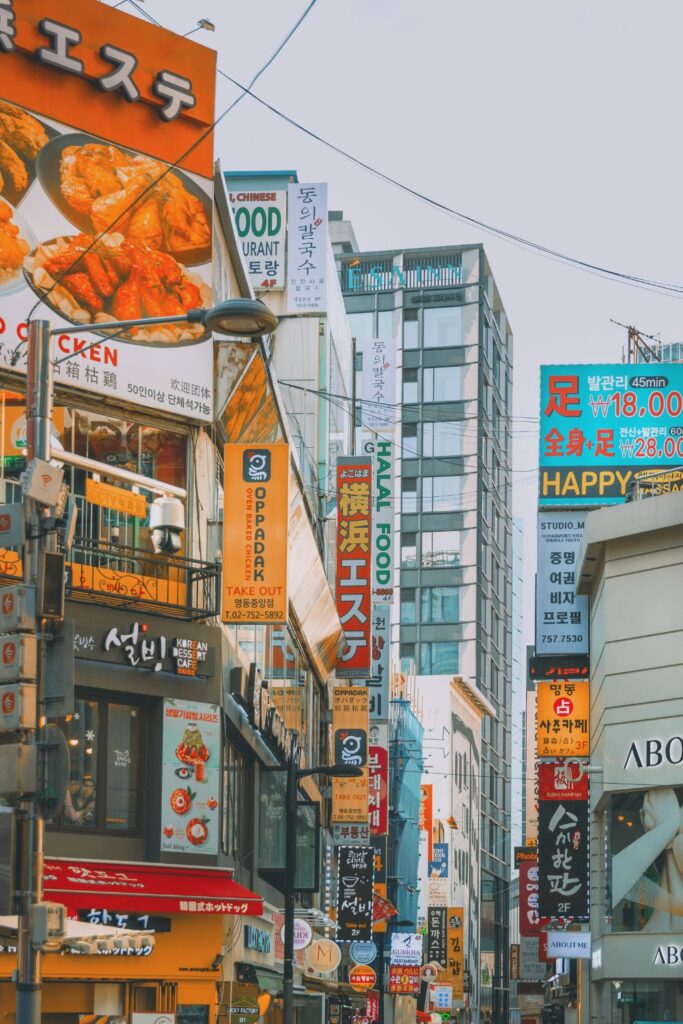
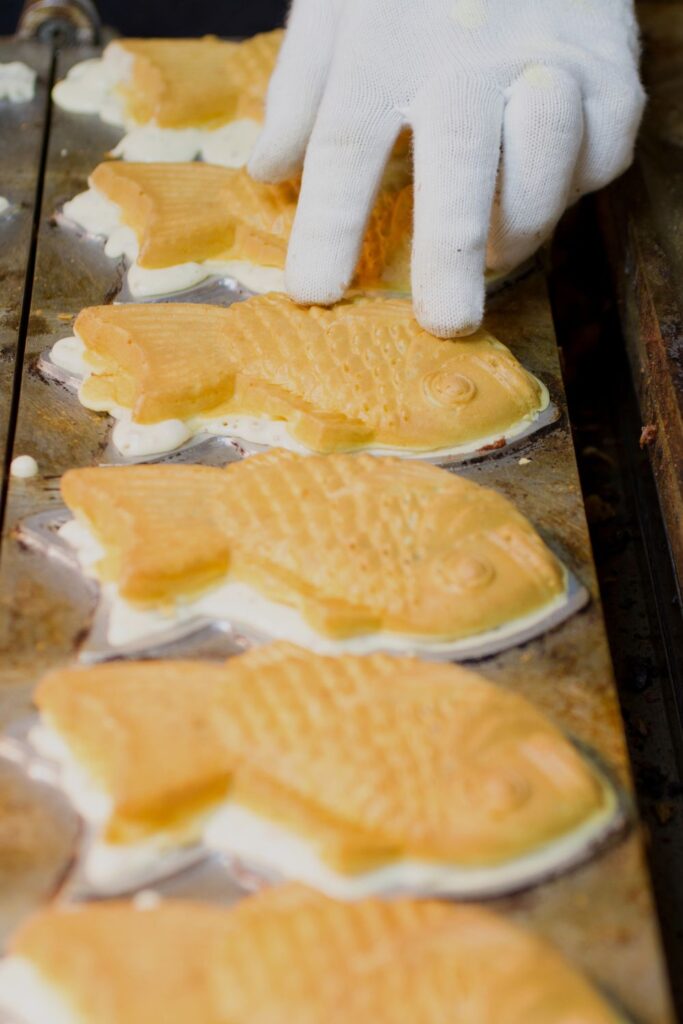
South Korea Travel Tip: Planning to eat at a street food market? Bring cash! Card isn’t accepted at most street food stalls in Seoul.
Essential survival tips for vegetarians in Korea
- All of the Korean street foods listed here are lacto-ovo vegetarian-friendly. Meaning, there are options with no meat in them, but they may be made using eggs and dairy.
- In general, if you have dietary restrictions, it’s advisable to double-check ingredients before you dig in. Some stall owners may use sauces/ spices that contain shellfish, for instance.
- I’ve made note of street food options that sometimes contain meat – so, you know when to confirm the meatlessness of an item.
- Just because a menu says ‘vegetable’ doesn’t mean it’s vegetarian! Often, food items in South Korea that are listed as a vegetable option (like kimbap or mandu) will still contain seafood or spam.
- Understanding how to ask if there’s meat in a dish, in Korean, is – in my opinion – essential. If you’re worried about pronunciation, have the phrase written down or typed out to show the staff.
- It’s unhelpful to say, “I’m vegetarian” or “I’m vegan” to communicate your food restrictions.
Less than 3% of Koreans are vegetarian (and that percentage includes all the pescetarians too). Because vegetarianism isn’t widespread, the dietary restrictions attached to veganism and vegetarianism aren’t well known in Korea.
Instead, it’s helpful to explain what you can’t eat or to rely on the golden phrase, “Is there meat in this?”
How to ask if there’s meat in a dish, in Korean:
I’ve included the Romanisation to help with pronunciation.
How to ask: Is there meat in this?
In Korean: 고기를 있어요?
Romanisation: Gogi-reul isseo-yo?
15 vegetarian street food in South Korea
Prices for street food in Seoul range from 2,000 KRW ( | £1.26 | $1.53 | 29 ZAR) – 10,000 KRW. If you want a rundown of what I spent on street food in South Korea, watch this mini vlog.
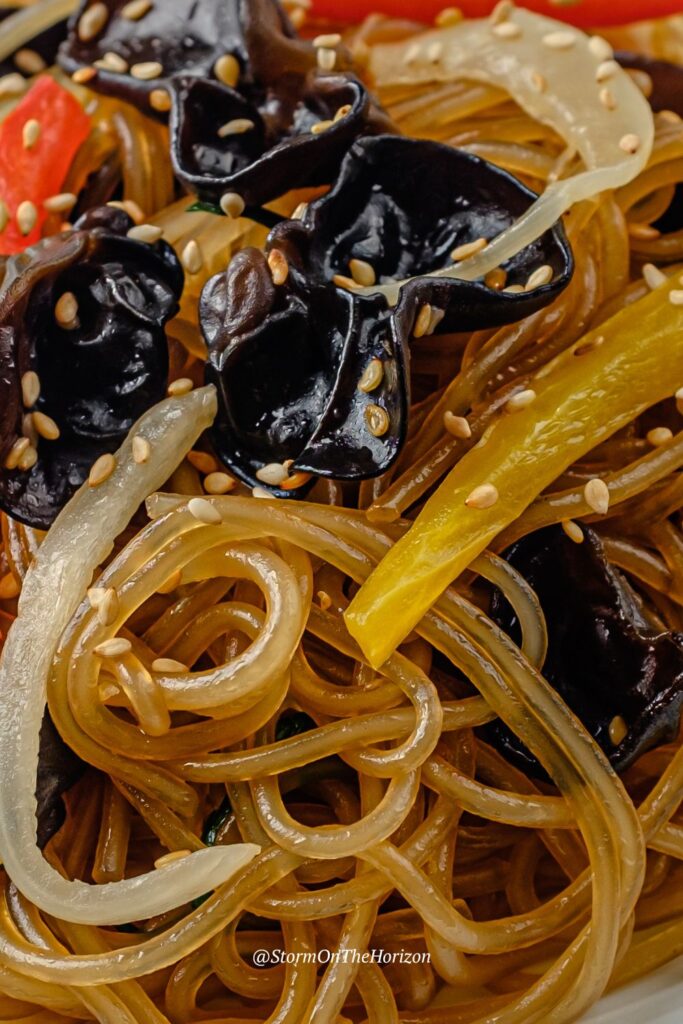

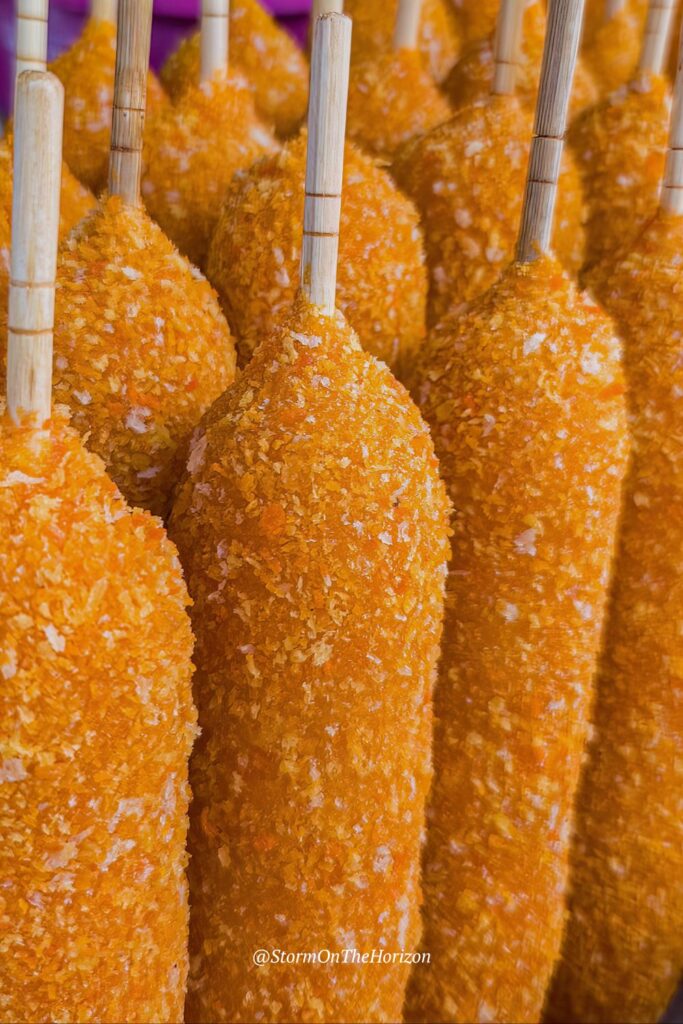
Savoury vegetarian-friendly options
Japchae | 잡채 | Noodle stir-fry
Japchae (잡채) is a stir-fried glass noodle and vegetable dish bursting with sesame oil flavour.
Traditionally, Japchae is meat-free but I’ve also seen it with marinated pork or beef so, it’s safest to confirm.
Mandu | 만두 | Dumplings
Mandu (만두) are Korean dumplings: Pan-fried until crispy on the outside and juicy on the inside. Most commonly served with a splash of sesame oil and soy sauce on top.
Check the ingredients! It may say ‘vegetable mandu’ on a menu board, but it may still contain meat. Double-check to be sure.
Gamja Hotdogs | 감자핫도그 | Corn dogs
There are always corn dog stands in food markets in Seoul (also called Gamja Hotdogs or, in Korean 감자핫도그). Meaty options are standard but you’ll also find mozzarella-only corn dogs.
If you’re worried about contamination, it’s worth noting corndogs (vegetarian or otherwise) are prepared in the same oil.
Smoothies | 스무디 | Fruit cups
During the warmer months, you’ll see stands with an array of fruit cups. Typically, these are blended and served like a smoothie – but you can also ask for the fruit as is.
In South Korea, fruit is really expensive. This is a nice option if you’re on the go and looking for a little fruit salad or a refreshing smoothie.
Gimbap | 김밥 | Seaweed rolls
Korean seaweed rolls are called gimbap (also romanised as kimbap). Gimbap is cooked rice – seasoned with sesame oil – and fillings including vegetables, pickles, egg, cheese, kimchi and meat; all rolled together in gim – dried seaweed.
Check the ingredients! Same as before, vegetable gimbap may still contain spam, ham or beef and seafood.
What’s the difference between gimbap and sushi?
Gimbap is often thought of as a Korean sushi roll, but they’re quite different.
Both suhi and gimbap contain gim (seaweed) and cooked rice but while sushi rice is seasoned with vinegar, kimbap rice makes use of sesame oil. Another difference between kimbap and sushi is the ingredients themselves. Sushi contains raw fish while gimbap often includes cooked meats like grilled beef (bulgogi) and ingredients like kimchi or pickled radish and even cheese and egg.
Hweori gamja | 회오리 감자 | Tornado Potato
Potato swirl, twist potatoes, potato on a stick – this street food goes by many names across the globe. A single potato is cut into a swirl, fried and then seasoned with different powered spices or sauces.

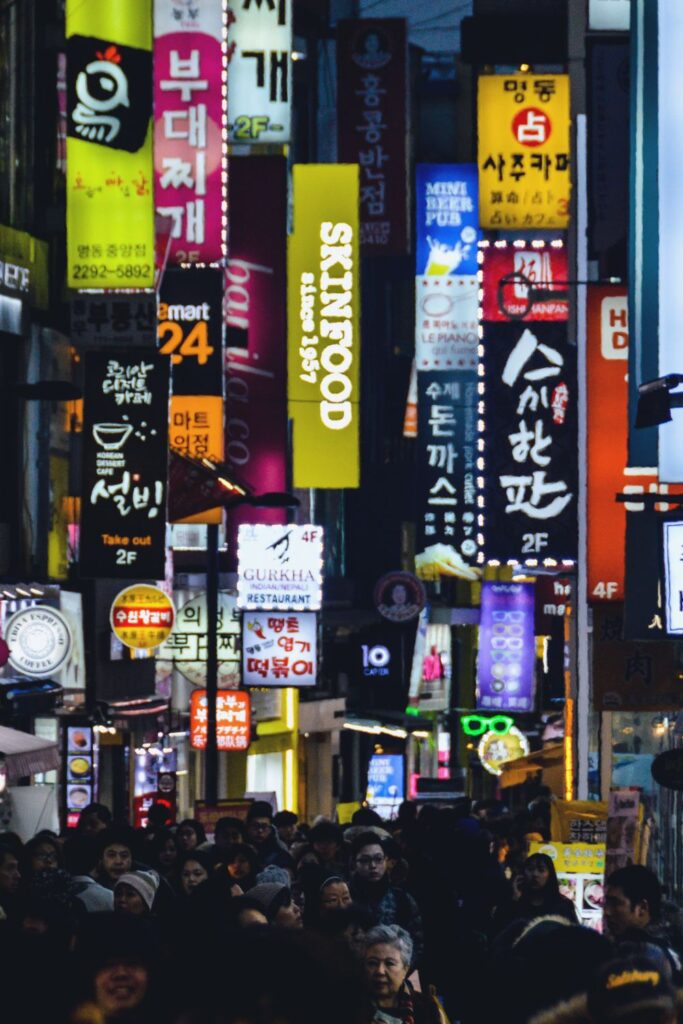
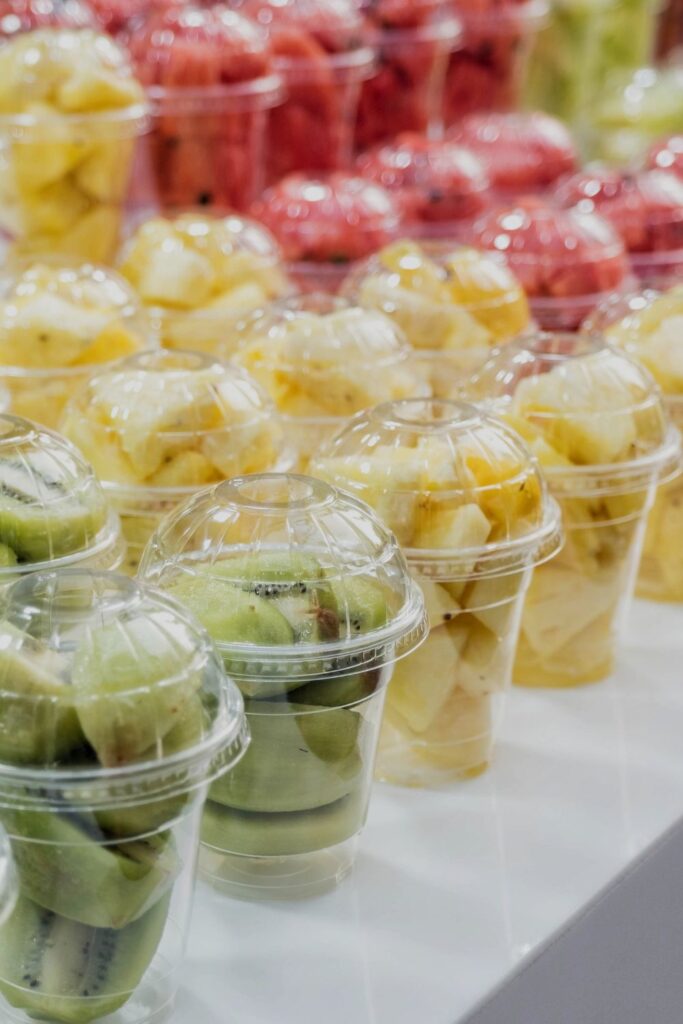
Twigim | 튀김 | Deep-fried everything
Twigim is basically tempura. In South Korea, you’ll find fish, meats and potatoes deep friend but (importantly for us) there are also carrots, onions and other vegetables.
Again, if contamination is a concern this isn’t a great option but if that’s less of a worry, this is a tasty, oily, crunchy vegetarian street food in South Korea.
Roasted sweet potato, corn or chestnuts | 군고구마, 군옥수수, 군밤
You’ll find roasted sweet potatoes, corn and chestnuts at most street food markets in Seoul.
South Korea must-try: If you get the chance, have a roasted sweet potatoe in Korea! I don’t know what Koreans are doing differently, but their sweet potatoes are just *so good*.
Gyeran-ppang | 계란빵 | Egg bread
This one’s on the savoury list, but honestly: You’ll be surprised how sweet gyeran-ppang is. These steamy little loaves of sweet bread are topped with an entire egg.
Hotteok | 호떡 | Korean pancake
Hotteok (호떡) are a sort of Korean pancake or fritter. Traditionally, hotteok is filled with sweet syrup, cinnamon, brown sugar and peanuts. You’ll also find vegetable-filled hotteok and (beware) meat-filled hotteok.
Sweet vegetarian-friendly options
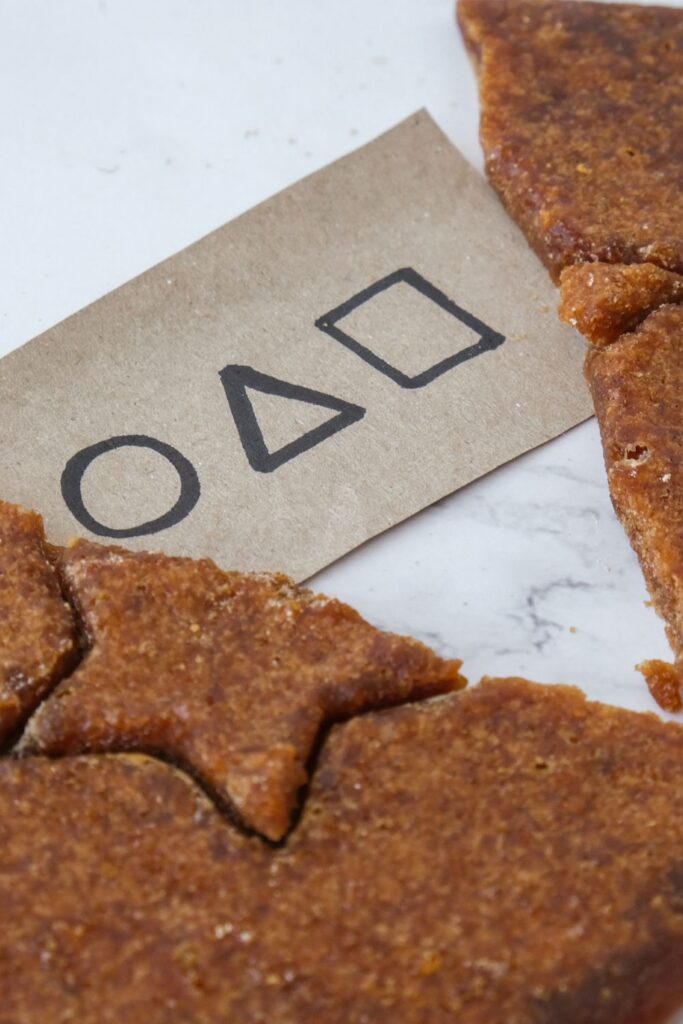
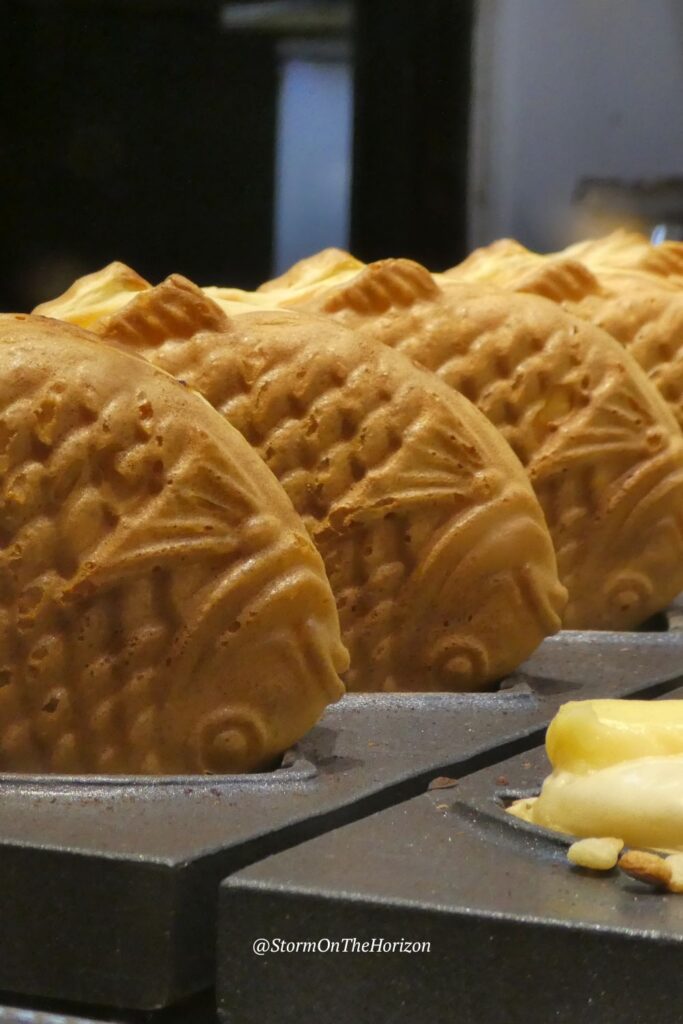
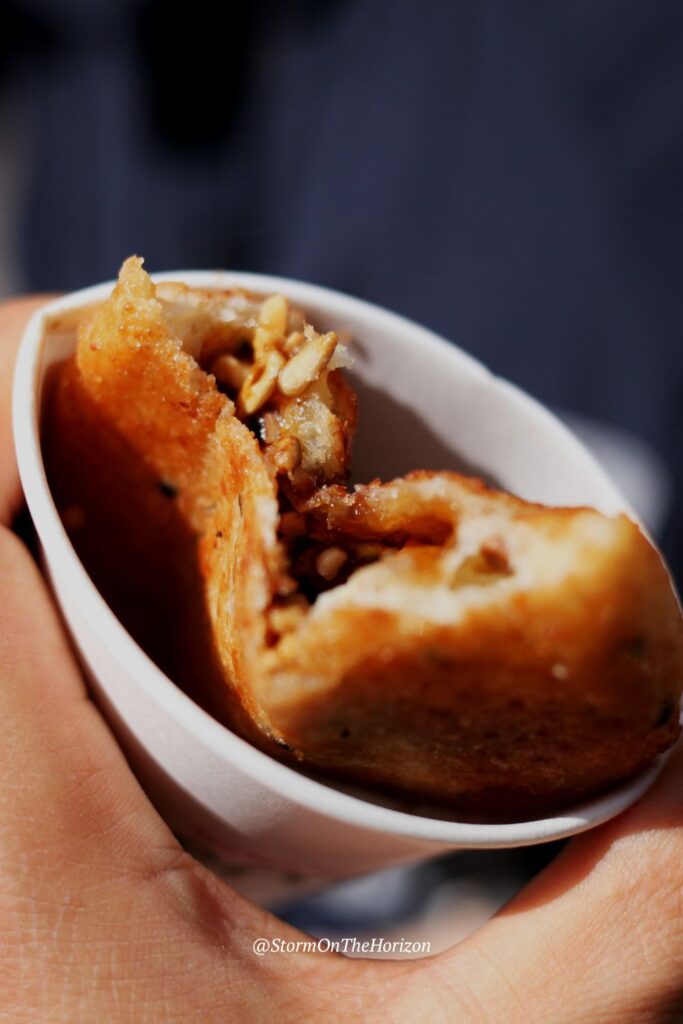
Bungeoppang | 붕어빵 | Carp bread
Bungeoppang (붕어빵) are fish-shaped pastries resembling carp. Not only are they cute, this pastry is crispy with a sweet filling – usually sweetened red bean paste, custard, cheese or Nutella.
This dessert originated from the Japanese taiyaki and is most famous in winter, in South Korea. But you’ll be able to try bungeoppang all through the year.
If you see it, I also recommend trying the croissant-bungeoppang (made with croissant pastry).
Ice-cream | 아이스크림
In hot and humid Korean summers, you’ll welcome the numerous soft-serve machines around Seoul. The reason ice cream has made the list is to point out that you can often find unique flavours – like sesame and sakura (Japanese for cherry blossom) flavours.
Oreo churros | 오레오 츄러스
There’s often an Oreo-themed cart at street food markets. Here, you can try Oreo ice cream and churros. What seals the deal for the Oreo churro is the little packet of sauce that you can spread on top.
Dalgona candy | 달고나 | Honeycomb candy
When you’re on the streets of Seoul, you can try dalgona – made famous to travellers through Netflix’s, ‘Squid Game’ – for yourself.
Dalgona is made by melting sugar and a bit of baking soda together, which foams up and turns into a light-caramel-coloured whipping cream which hardens to form the honeycomb toffee candy.
Waffles and croffles | 와플, 크로플
Waffles and croffles (croissant waffles) make a great – and filling – vegetarian street food in South Korea. You can find them topped with ice cream, slathered with Nutella, syrup, cream, jams as well as fruits and nuts.
Korean Doughnuts
You’ll find both sweet and savoury variants of Korean doughnuts. My favourite was the sweet options – coated in sugar and totally more-ish.
Vegan options at Korean street food markets:
Since creating this vegetarian street food guide, I’ve been asked if there are vegan Korean street food options. Totally honest: They’re very limited.
The street food available to vegans in Korea seems to be accidentally vegan. Here’s a short list:
- Hotteok
Sometimes, it’s called ‘honey’ hotteok, but on asking a vendor at Myeongdong Night Market, they said they’d used brown sugar. Double-check to be sure! - Tornado potatoes
- Japchae noodles
- Roasted sweet potatoes
- Candied fruit
- Fruit cups and pomegranate juice
One thing left to do: Let’s eat.
I hope this guide to vegan and vegetarian street food in South Korea is helpful. Anything to add to the list?